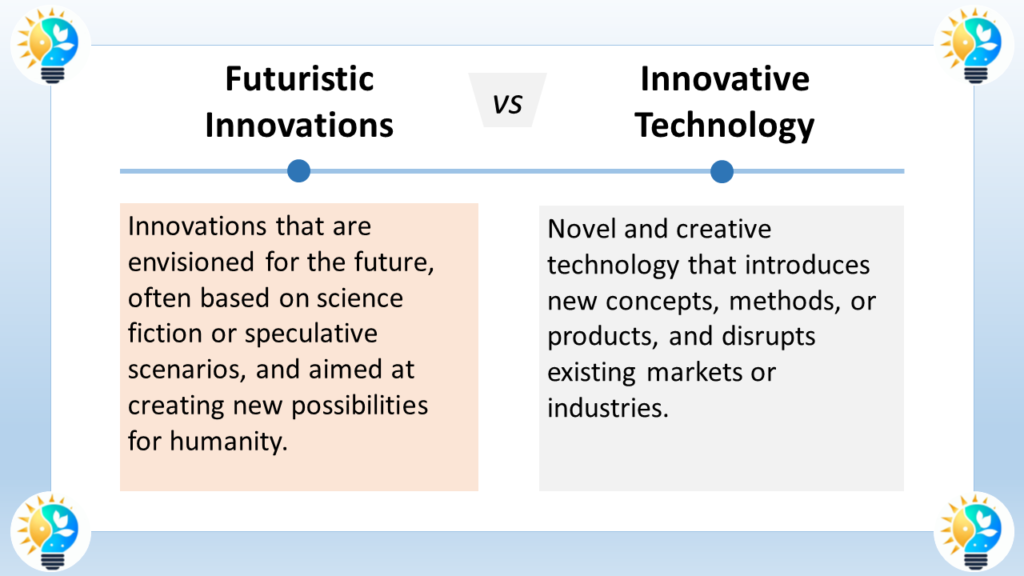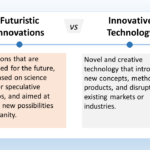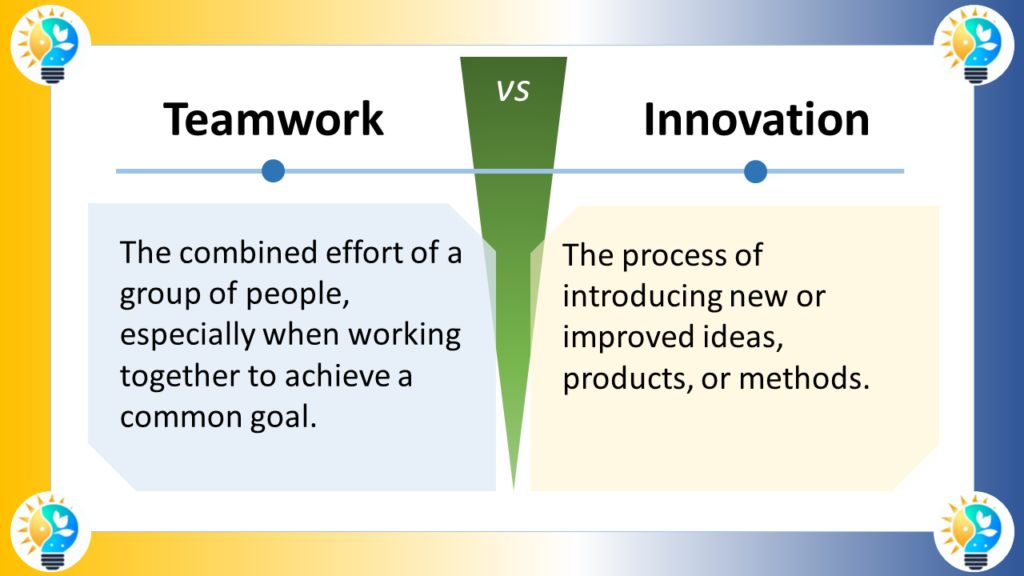Both futuristic innovations and innovative technology push boundaries, but while futuristic innovations often envision future scenarios, innovative technology actively brings these visions into reality through novel products or methods.

In discussions of technological development and progress, the concepts of Innovative Technology and Futuristic Innovations often arise, each with its own distinct implications for the trajectory of how we use and interact with technology.
Definitions
Defining Innovative Technology
Innovative Technology refers to the introduction of new ideas, methods, or products that bring about significant improvements to existing technology or practices. Innovations in technology are characterized by their immediate practical applications and the value they add through enhancements or novel solutions to problems.
Characteristics of Innovative Technology
- Applicability: Designed for immediate or near-term application.
- Improvement: Provides a notable upgrade or enhancement over existing technologies.
- Market readiness: Ready for commercialization and integration into current markets.
Defining Futuristic Innovations
Futuristic Innovations, in contrast, are ideas or concepts that stretch the boundaries of current understanding and venture into the realm of what technology might achieve in the distant future. They often embody bold predictions or visions of a world transformed by advancements that are not yet feasible or within reach.
Characteristics of Futuristic Innovations
- Visionary: Grounded in a forward-thinking perspective, often beyond the current technological horizon.
- Speculative: May currently lack complete scientific or practical foundation.
- Long-term potential: Hold promise for dramatic changes to society and industry but may take decades to realize.
Exploring a Variety of Synonyms for Innovative Technology
- Advanced Technology
- Cutting-Edge Innovations
- Cutting-Edge Breakthroughs
- Disruptive Tech
- Emerging Technologies
- Forward-Looking Tech
- Futuristic Innovations
- Groundbreaking Developments
- High-Tech Breakthroughs
- Innovative Breakthroughs
- Inventive Solutions
- Leading-Edge Advancements
- Modern Technological Breakthroughs
- Progressive Advancements
- Next-Generation Technology
- Novel Tech
- Revolutionary Tech
- State-of-the-Art Solutions
- State-of-the-Art Innovations
- Trailblazing Innovations
- Visionary Tech

Innovation is considered as a driving force in progress.
It includes the introduction of novel ideas, methods, or products that bring positive change and advancement.
For more information about innovations, check our glossary
Innovative vs. Futuristic: Relationship and Relevance
While both innovative technologies and futuristic innovations relate to the advancement of technology, their relationship to the present differs. Innovative technologies are often the driving force behind current progress and can be seen and felt in today’s products and systems. In contrast, futuristic innovations inspire long-term goals and ambitions, shaping the direction of research and development with a view toward what might one day be possible.
Contextual Use of the Terms
In industry, innovative technology is frequently a focus for competitive strategy, product development, and investment, as it is associated with immediate growth and improvement. Futuristic innovations, while also important, tend to influence policy-making, long-term strategic planning, and blue-sky research initiatives.
Examples of Utilization
An example of innovative technology could be the adoption of solid-state batteries in electric vehicles. These batteries offer improvements in energy density and safety over traditional lithium-ion batteries and are poised to enter the market.
In contrast, an example of futuristic innovation might be the concept of a space elevator, a theoretical structure reaching into space to transport materials and possibly humans, thereby revolutionizing space travel and logistics. The idea is contingent on materials and engineering practices that are not yet available.
Comparison Innovative technology vs futuristic innovation
Innovative technology and futuristic innovations are related concepts but have distinct differences. Here is a breakdown of the differences between the two:
Innovative Technology:
- Definition: Innovative technology refers to the development and application of new or improved technologies that bring about advancements and improvements in various fields.
- Focus: It emphasizes the creation and implementation of novel technological solutions to address existing problems or enhance existing processes.
- Characteristics:
- Practical: Innovative technology aims to provide practical solutions to real-world challenges.
- Tangible: It often results in the creation of tangible products or systems that can be implemented and utilized.
- Incremental: It can involve incremental improvements or enhancements to existing technologies.
- User-centered: Innovative technology focuses on meeting the needs and preferences of users.
- Examples: The development of smartphones, electric vehicles, artificial intelligence, and renewable energy technologies can be considered innovative technology [1].
Futuristic Innovations:
- Definition: Futuristic innovations refer to visionary ideas, concepts, or technologies that are ahead of their time and envision possibilities for the future.
- Focus: It emphasizes the exploration and conceptualization of groundbreaking ideas and technologies that may not be fully realized or implemented in the present.
- Characteristics:
- Visionary: Futuristic innovations push the boundaries of imagination and envision possibilities that may not be currently feasible.
- Speculative: They often involve speculative or hypothetical concepts that may require significant advancements in technology or societal changes to become a reality.
- Forward-thinking: Futuristic innovations anticipate future needs and challenges, aiming to provide solutions that may not be immediately applicable.
- Inspirational: They inspire and stimulate creativity, encouraging further exploration and development.
- Examples: Concepts like flying cars, space tourism, teleportation, and advanced virtual reality systems can be considered futuristic innovations [2].
In summary, innovative technology focuses on the practical development and implementation of new or improved technologies to address current challenges, while futuristic innovations explore visionary ideas and concepts that may shape the future but are not yet fully realized or implemented.
FAQ
Q: Can a futuristic innovation become an innovative technology?
A: Yes, as scientific and technological breakthroughs occur, what was once considered a futuristic innovation can evolve into a practical, innovative technology.
Q: Are all futuristic innovations eventually realized?
A: Not all. Some may prove to be technically unfeasible or may be bypassed by other unforeseen technological developments.
Q: How does society benefit from futuristic innovations?
A: Futuristic innovations stimulate imagination and drive the pursuit of new knowledge, which can lead to unexpected breakthroughs and advancements.
Q: What challenges do futuristic innovations face in becoming reality?
A: Challenges include scientific and technical feasibility, funding for extensive research, public acceptance, and often, ethical considerations.
Q: How do companies decide to invest in innovative technology versus futuristic innovations?
A: Companies often weigh immediate market needs and return on investment for innovative technology, while also allocating resources for the research and exploration of futuristic innovations that could provide long-term strategic advantage.


